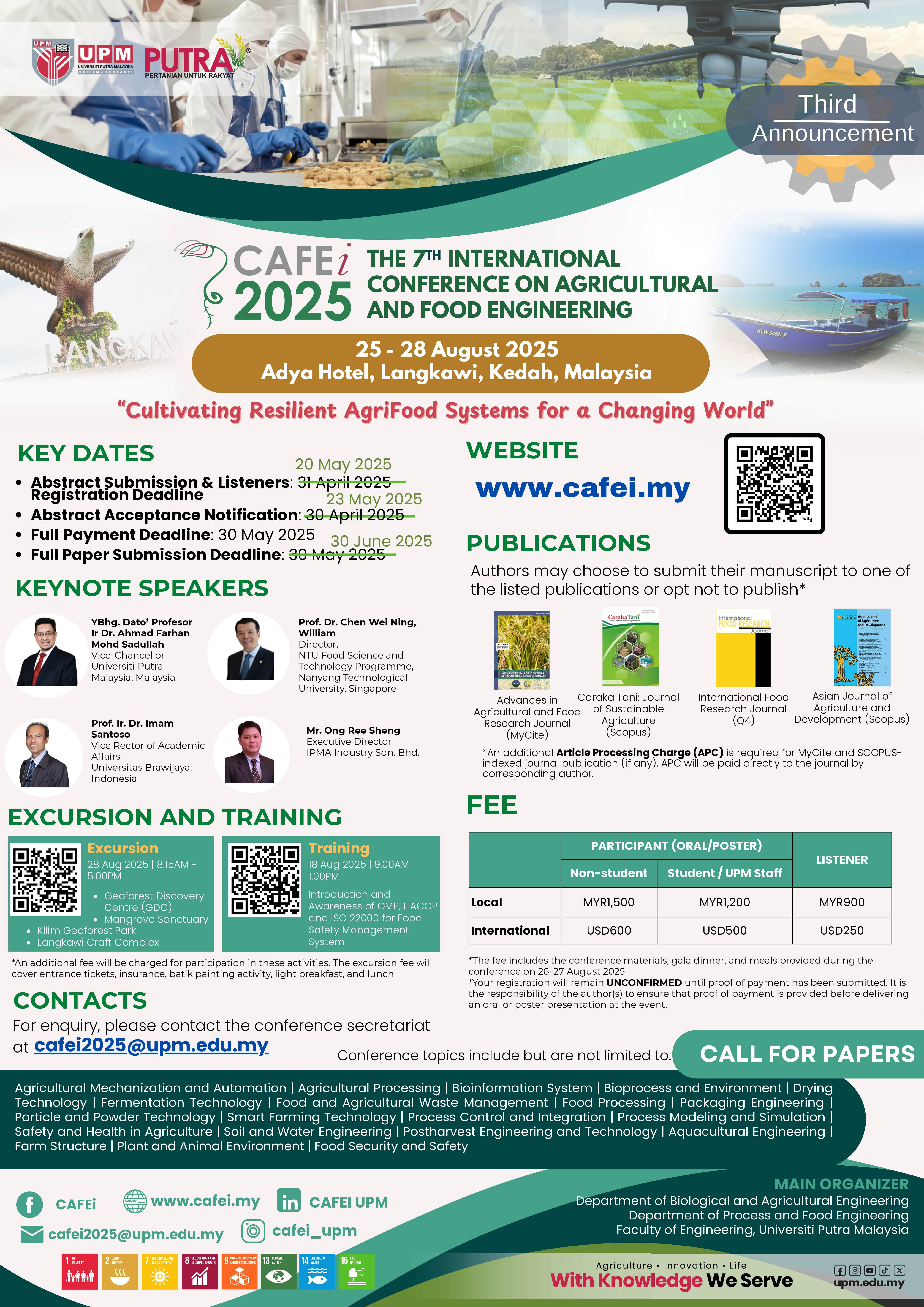Effect of Packaging Materials on Antifogging Film Properties and Quality of Oyster Mushrooms at Different Storage Temperatures
DOI:
https://doi.org/10.36877/aafrj.a0000367Abstract
Mushroom is highly perishable and easily damaged within a day after harvesting due to their high respiration rate which leads to the release of water vapour. The most effective way to preserve fresh mushrooms is by packaging. However, excessive water vapour inside the packaging can cause condensation or fog and subsequently, lead to product damage. Hence, appropriate material for packaging mushrooms is important to maintain the quality and prolong the shelf-life. The main objective of this study is to compare the effect of different packaging material types on the fogging effect. The studied materials are low-density polyethylene (LDPE), polypropylene (PP), nylon, and gelatin-based film. Based on the market survey prior to the study, it showed that the most plastic material used in the market is polypropylene (PP) compared to other materials. The experimental study then proceeded by comparing the different types of materials used for the packaging of mushrooms. Samples of 20 g mushrooms were filled in a cup covered with four different types of films and stored at three different storage temperatures (5 °C, 10 °C, 30 °C) for 7 days. It was observed that the gelatin-based film showed good antifogging behaviour when compared to other films. Additionally, the mushrooms showed high weight loss and severe browning for all types of packaging materials after 7 days of storage at high temperatures (30 °C). In conclusion, the gelatin-based film has revealed excellent water-adsorbing with antifogging behaviour to maintain the quality and shelf life of mushrooms at low temperatures for storage and distribution.
Downloads
Published
How to Cite
Issue
Section
License
Copyright (c) 2023 Roseliza Kadir Basha, Nor Farhanim Zaidy, Nazatul Shima Azmi, Intan Syafinaz Mohamed Amin Tawakkal, Amaiza Mohd Amin, Noor Zafira Noor Hasnan

This work is licensed under a Creative Commons Attribution-NonCommercial 4.0 International License.
Author(s) shall retain the copyright of their work and grant the Journal/Publisher right for the first publication with the work simultaneously licensed under:
Creative Commons Attribution-NonCommercial 4.0 International (CC BY-NC 4.0). This license allows for the copying, distribution and transmission of the work, provided the correct attribution of the original creator is stated. Adaptation and remixing are also permitted.

This broad license intends to facilitate free access to, as well as the unrestricted reuse of, original works of all types for non-commercial purposes.
The author(s) permits HH Publisher to publish this article that has not been submitted elsewhere.

.png)

.jpg)



